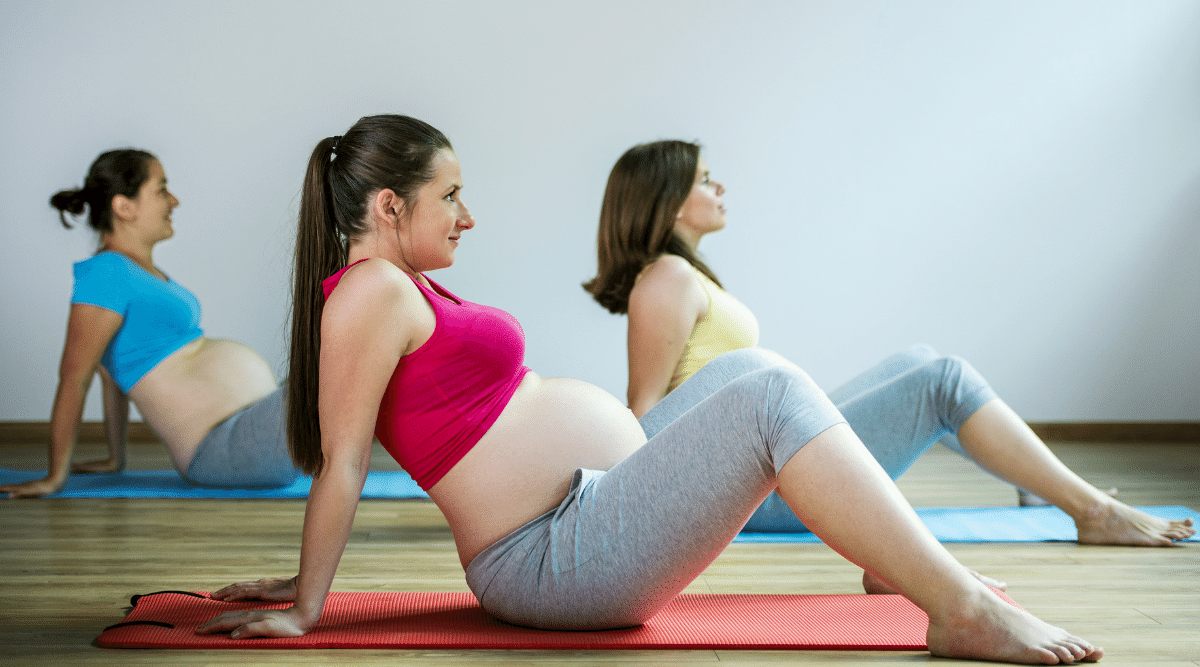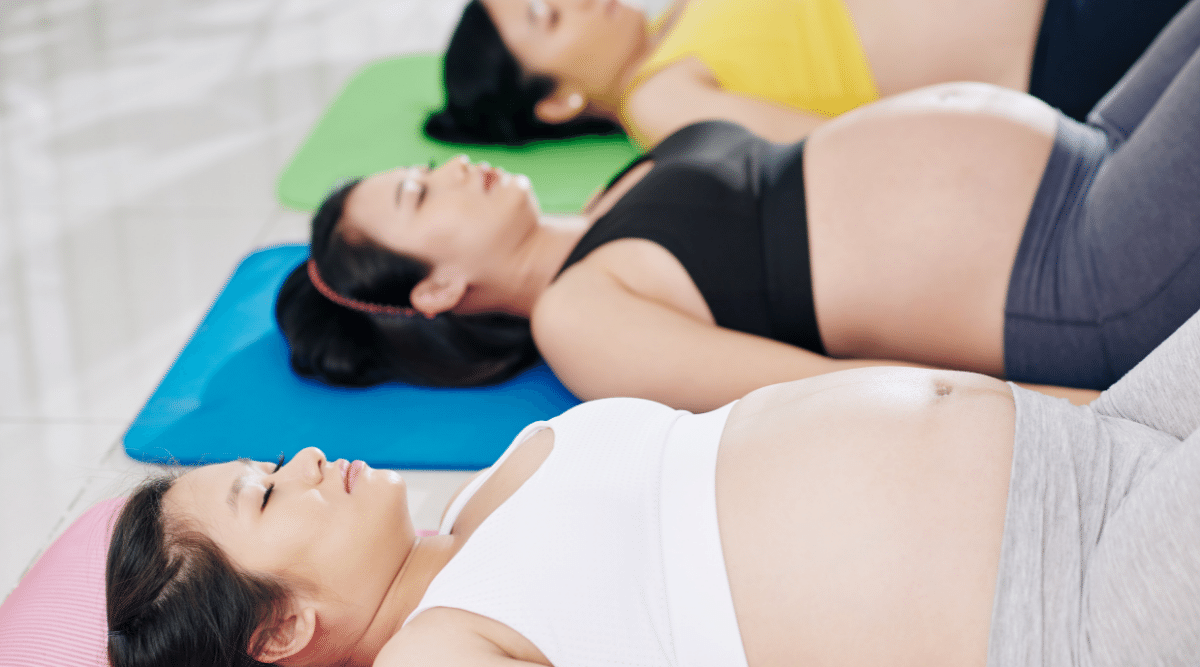What healthy habits in pregnancy and birth create a stronger, more functional pelvic floor? We’ve drawn on the expertise of Melbourne women’s health physio Chloe Lorback to find out.

Firstly, what is a women’s health physio?
A women’s health physio is a physio that has special qualifications to look after women – especially in childbearing and the menopausal years. Also, most women’s health physios are passionate about pelvic floor health.
Latest advice on exercise in pregnancy
Traditionally, and even now, women have been discouraged by family and friends from exercising in pregnancy. Has the advice we give women about exercise and pregnancy changed over recent years?
Yes, it sure has; it’s absolutely backflipped. The Royal Australian College of Obstetricians and Gynaecologists now recommends that pregnant women do half an hour of moderate-intensity exercise on most – if not all – days of the week, which is amazing! This advice is the same for healthy Australian exercise guidelines.
So exercise in pregnancy is very much encouraged for lots of reasons. The main ones help minimise excess weight gain, improve cardiovascular fitness and muscle strength, and recover from birth. Plus, it makes you feel great. However, the mental health side of exercise is often underutilised.
What to avoid when exercising
Everyone is different, depending on their unique situation, but what principles should pregnant people bear in mind when exercising?
That’s a good question. Anything which involves heavy lifting is contraindicated during pregnancy. It puts way too much pressure downwards on the pelvic floor muscles when there’s already quite a lot of pressure.
High-impact exercise is the other thing that we try to modify. We try to encourage women to continue with low-impact exercise. People who are keen runners fight me tooth and nail on this. They want to keep on running throughout their pregnancy.
My advice is you’ve only got one set of pelvic floor muscles, so you want to make sure that you look after them when you’re pregnant. And it’s a short time to avoid doing something you love for lots of future gains.
What about everyday life and activities – what should pregnant women keep in mind to protect themselves?
Again, it’s focused on heavy lifting. So, when you’re coming home from the supermarket, try to carry loads that are not too heavy. You might need to make two trips to the car instead of trying to put all the bags in your arms. You might ask your partner to help you lift the kids out of the car.
And you might try towards the end of pregnancy to avoid being on your feet all day. It’s good to stay active, but it’s also good to listen to your body on those days; when you wake up feeling exhausted, you’ve got to listen to your body. That’s Mother Nature sending us messages.
Does a caesarean birth protect the pelvic floor?
Some women want to know if there is a difference in the impact on the pelvic floor between vaginal birth and caesarean birth. What would you say to them?
I’m so glad you asked me this! Interestingly, suppose you look at the statistics early on after birth. In that case, if we look at stress incontinence alone, women who had a vaginal birth have a higher incidence of stress incontinence. But, if you look 12 months down the track, you can’t tell the difference in the mode of birth when you look at urinary stress incontinence.
A caesarean is not protective against stress incontinence, which means leaking wee with actions like coughing, laughing, sneezing, running or lifting things. It might be protective against other things, but certainly, for women who are worried about stress incontinence, a caesarean is not going to help you.
A caesarean section doesn’t prevent issues with our pelvic floor muscles because it’s the pregnancy and the load that the muscles are under during pregnancy that causes a lot of the problems. So apart from the last hour or so of the birth, where there is more stretching and potential injury to the pelvic floor muscles and surrounding areas, it’s the pregnancy that stretches those muscles. And we all have to work to regain pelvic floor health, regardless of what type of birth we’ve had.

What’s the most important thing you think pregnant women should know about their pelvic floor during pregnancy?
The most important thing is that the sooner you start, the better your outcome will be. It’s much easier to learn a skill when the muscles function well, and there’s been limited stretching.
So learning to do a correct pelvic floor contraction during pregnancy will make it so much easier to try and restart pelvic floor exercise after you have the baby.
I think another important thing is to start early, and if you’re not sure if you’re doing it right, seek help early on. Because if I had a dollar for every time someone said to me, “I wish someone had told me if I was doing it right. I should have come and seen you seven years ago!” I’d be a billionaire!
Chloe Lorback is a women’s health physiotherapist and pilates instructor. She is the Director at Fit to Deliver, Melbourne.
Post published 8th February 2022


Recent Comments